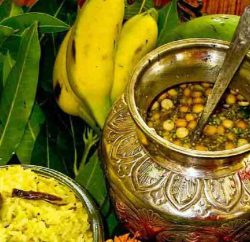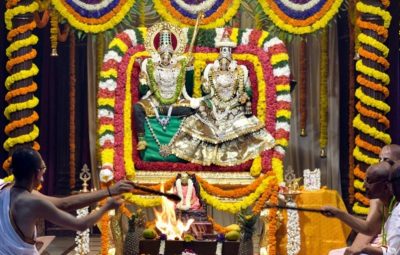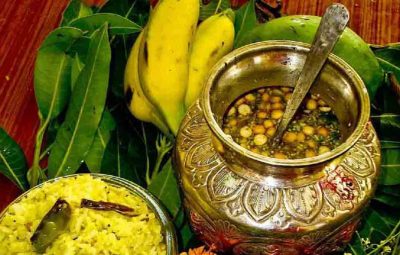This article is an eye-opener for those who find nothing wrong in killing cows for the meat, without realizing them as Kamadhenu.

The world is designed in such a way that every creature in this world depends on some other creature as its source of food. Thus there is a perfect arrangement in nature with regard to the food-chain. It is stated in the Srimad-Bhagavatam:
ahastani sahastanam
apadani catus-padam
phalguni tatra mahatam
jivo jivasya jivanam
(SB 1.13.47)
“Those who are devoid of hands are prey for those who have hands; those devoid of legs are prey for the four-legged. The weak are the subsistence of the strong, and the general rule holds that one living being is food for another.”
On the basis of this statement, those who find no fault in killing cows for the meat may question: What is wrong in killing the cow and eating the meat? The meat-eaters are anyway killing so many animals and cow is just one of them. How will it make a difference if you kill a cow?
Human being is indeed an omnivore. But should the cow be one of the animals slaughtered for meat?
What is special about the cow?
It is said in the scriptures that all the devatas reside in the body of the cow. The great spiritual significance of the cow as found in the scriptures is what makes the Hindus look at it with adoration. But the cow as the backbone of agriculture and economic growth is universally applicable without a doubt.
All products obtained from the cow are of great benefit to human beings. Be it the milk consumed every day by people of all ages, or its urine and dung used as manure for farming, or its skin used for leather, the cow is the special animal that renders service to us throughout its life and even after its death. Rightly it is glorified as Kamadhenu, wish-fulfilling cow in the Vedic scriptures. Cow is truly a gift from the Lord to the entire humanity for a peaceful and prosperous living.
The cow’s milk is a nutrient-rich balanced food containing proteins, carbohydrates, minerals and vitamin D, providing immunity from diseases. It is helpful in the treatment of certain diseases and also aids in psychological growth.
The milk and its derivatives such as yogurt, butter and ghee are used in the preparation of a number of delicious foods. It has been scientifically proven that ghee offered into the sacrificial fire during Vedic rituals helps in increasing the oxygen level in the atmosphere.
Does the cow become useless after it stops giving milk?
Cow is the only animal whose stool and urine too can be utilized in a wide variety of ways in our daily life.
Ayurveda, the Vedic medical science suggests cow’s urine for the treatment of stomach-related diseases. Scientific studies have revealed that the cow’s urine is helpful in the treatment of cancer and tuberculosis.

Cow-dung is proven to be the best manure and sadly today a number of chemical fertilizers of various brands have occupied its place alluring the farmer with high yields. The continuous use of the fertilizers over a period of time renders the land barren and it takes several years to restore the soil back to its original state. The use of cow-dung is eco-friendly and it enriches soil, increases its fertility by 50% and also yields healthy crops along with the use of organic pesticides. Studies have shown that one kg of cow dung used in the farm makes the soil efficient to store 9 litres of water. Cow-dung is dried and used as cheap fuel in the rural areas. While the biogas produced from cow-dung and cow-urine is commonly used for cooking, countries like America and Germany are also using it as a fuel for vehicles.
Hence the cows which are considered useless because they have stopped giving milk are not really useless.
A Japanese study showed that producing a kilogram of beef leads to the emission of greenhouse gases with a global warming potential equivalent to 36.4 kilograms of carbon dioxide (CO2). In other words, a kilogram of beef is responsible for the equivalent of the amount of CO2 emitted by the average European car every 250 kilometres. (New Scientist magazine, 18 July 2007).
Let us bring the cow at the forefront of developing our country’s economy and restoring happy and healthy environment. Let us realize its true position as Kamadhenu and take care of it till the end of its life like our own mother.










